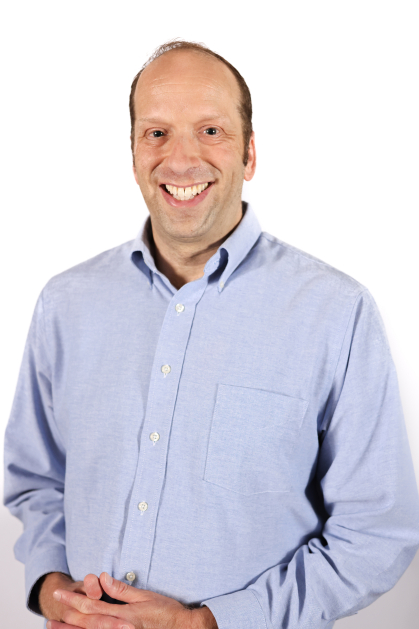Rutgers Math Chair Aids Winner of Prestigious Fields Medal With Breakthrough Research
Work by Ukrainian mathematician Maryna Viazovska, second woman to win a Fields Medal, includes contributions by Professor Stephen Miller

Stephen Miller, a Distinguished Professor of Mathematics at Rutgers, has spent more than 20 years as part of a group quietly working to solve aspects of one of the oldest, deepest and most deceptively simple-sounding puzzles in math: What is the most efficient way to pack spheres in a volume of space?
It’s a complex mathematical question that had some important practical applications during the pandemic: sphere packing has been used to design social distancing options in public spaces to slow the spread of COVID-19.
The mathematical mystery was thrust into the public eye over the past week: The International Mathematical Union (IMU) awarded the Fields Medal, one of math’s highest honors, to Maryna Viazovska for the Ukrainian mathematician’s trailblazing solutions. She is only the second woman to be so honored. The award has shone a spotlight on Miller’s contributions as Viazovska’s co-author.
Amarel, Rutgers University’s high-performance computing cluster, earned recognition, too. In her medal lecture at the IMU meeting in Helsinki on July 6, Viazovska thanked Miller and “the Rutgers supercomputer.”
For Miller, chair of the Department of Mathematics in the School of Arts and Sciences, the media attention is an opportune moment to discuss what he sees as Viazovska’s bold work, his intellectual odyssey through the multidimensional world of sphere packing and the joys of a mathematical life.
“The math behind this has inherent beauty and getting to see it was the reward,” said Miller, a number theorist and cryptography expert who joined the Rutgers faculty in 2001. “It’s as though a comet appeared in the middle of the day with a gorgeous show of lights in the sky, and only a few people were there looking at the sky to see it when it happened.”
The question of how to pack the most spheres into a space intrigues mathematicians because contemplating it requires an understanding of complicated ideas involving multiple areas, including number theory, algebra and geometry.
“It’s a challenge to give an airtight reason why it’s impossible to fill more space with spheres than people already have done,” Miller said. “How do we know there isn’t some clever new idea out there which can do better? A proof gives us an ironclad reason there can’t be.”
Miller’s father, a chemist, introduced him to the sphere-packing problem when he was 12. He was hooked.
The challenge centers around finding the densest way to pack identical spheres in any given dimension.
The densest packing wasn’t known in any other dimension until 2016, when Viazovska proved a structure known as the E8 lattice, a sort of multidimensional grid, fit the bill for a volume in the realm of an eight-dimensional world. Shortly after, Viazovska, working with Miller and three other mathematicians – including Miller’s long-time collaborator, Henry Cohn, a principal researcher at Microsoft Research – proved a structure called the Leech lattice represented the best possibility for sphere packing in a realm of 24 dimensions.
“I spent a very intensive week once her work was announced and it completely changed my life,” said Miller.
Normally, as the then-graduate vice-chair, Miller would have been ensconced in his duties, advising about 100 students. But it was spring break at Rutgers.
“For three or four days, I put everything aside and focused,” he said. “A lot of it was writing in a notebook. A lot of it was talking to Henry. And then a lot of it was being on the computer and reading printouts of what [Viazovska] had done. It was very compressed. You can work on something for decades and then almost everything can fall into place in a matter of days.”
Miller, who became a fellow of the American Mathematical Society in 2018, didn’t declare himself as a math major until his junior year at the University of California at Berkeley when he discovered research topics in the math department were “too fascinating to ignore.”
After graduating as the valedictorian of all the mathematics majors, Miller earned a doctoral degree in math from Princeton University in 1997. He then joined the faculty of Yale University. During a visiting National Science Foundation postdoctoral fellowship at Harvard University in 1999, he met and started on sphere-packing problems with Cohn, who was working with Noam Elkies, the noted mathematician at Harvard University.
Miller explained Viazovska was able to find an upper bound and proved it equaled the best packing configuration that mathematicians were aware of. Miller said he and the others were able to follow Viazovska “through the door” she opened and solve the problem for 24 dimensions.
After the 2016 breakthrough, Miller began working with Viazovska on a regular basis, a professional collaboration that continues today with a weekly Wednesday morning Zoom call.
As strange as multiple dimensions sound, Miller approaches them by simply thinking of each additional dimension as an entity that represents an additional coordinate. For example, a fourth dimensional space adds the element of time as the fourth coordinate.
Such thoughts of ever-larger dimensions add immeasurably to the joy of being in his field, he said. The latest discoveries in sphere packing open the door to many more inquiries.
“Maryna broke open this wall and she gave us access to this landscape of such beauty,” Miller said. “We’re going to be playing with this landscape for a long time. In math, it’s hard to think of anything better than that."


